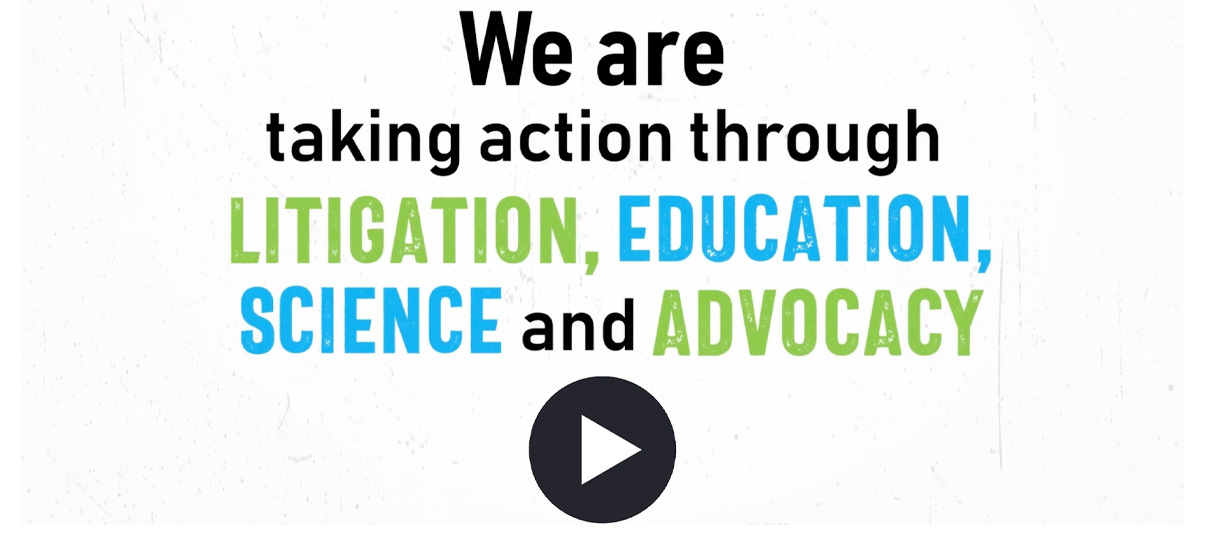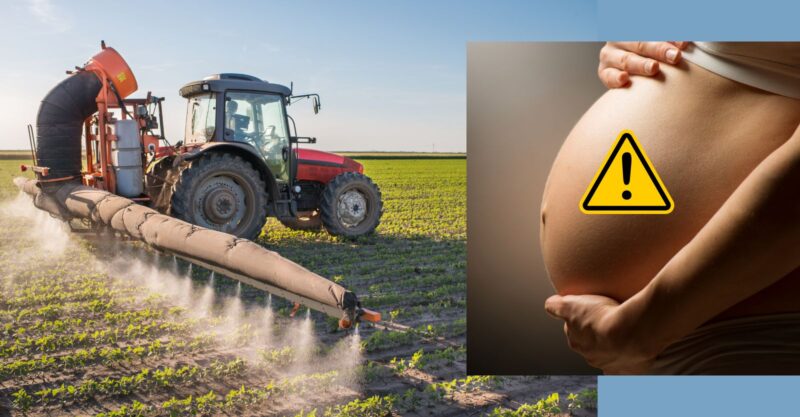New Study Links Maternal Pesticide Exposure to Higher Rates of Spontaneous Abortion
Review & Meta-Analysis Raises Awareness About the Risks to Pregnant Women and Advocates for Safer Farming Practices
A comprehensive literature review in Ecotoxicology and Environmental Safety links a heightened risk of spontaneous abortion (SAB) with pesticide exposure.
“The strengths of our study include being the first systematic review and meta-analysis to explore the association between exposure to pesticides and the risk of SAB,” the authors say. This novel approach includes analyzing 18 studies, totaling 439,097 pregnant participants, that allows the researchers to highlight an important public health issue and raise concerns for maternal contact with the harmful chemicals in pesticide products.
SAB, also known as spontaneous miscarriage, is defined as the loss of pregnancy occurring prior to 20 weeks of gestation. “It has been observed that approximately 10–15% of pregnancies end up terminating spontaneously,” the researchers report. According to the authors, these negative birth outcomes can be attributed to many factors such as advanced maternal age, anatomical, immunological, and endocrinological disorders, infections, tobacco use, alcohol intake, abnormalities of the placenta, and exposure to heavy metals, radiation, and pesticides.
To connect SAB specifically to pesticide exposure in mothers, a literature search was conducted for peer-reviewed studies that include pregnant study participants, ages 16 and above, who report “exposure to one or more pesticides or their metabolites, as singular compounds or as mixtures, compared with women with no history of pesticide exposure or those exposed to low doses of pesticides.” 18 studies, comprising hundreds of thousands of participants, matched these parameters and include four case-control studies, as well as eleven cohorts and three cross-sectional analyses.
These studies were predominantly conducted in the United States (U.S.) and Italy, and they reveal organophosphate pesticides as the most used type of chemical that the mothers reported. (See more coverage on organophosphates here.) From the studies, “[t]he frequency of SAB events and the total number of patients in each group were used to calculate the Relative Risk (RR),” the authors note. The RR represents an effect measure to quantify the association between the exposure and the outcome.
As a result of their analysis, the researchers find “a significant 41% increase in SAB risk among pregnant women exposed to pesticides compared to pregnant women without exposure to pesticides.” This correlation highlights the additional risks expectant mothers have for one of many negative birth outcomes that pesticides have been found to exacerbate.
“Exposure to pesticides has been proposed as a potential contributor to adverse pregnancy outcomes, possibly through the induction of inflammation, oxidative stress, and disruption of endocrine functions,” the authors share. They continue, “Females exposed to pesticides may experience various reproductive complications, such as abnormal menstruation, diminished fertility, SAB, preterm or post-term delivery, dead fetuses, congenital anomalies, and decreased birth weight. Pesticides can cross the placenta and harm the developing fetus. This can lead to problems with cellular division and differentiation, potentially causing developmental aberrations and increasing the risk of miscarriage.”
Many studies have revealed maternal exposure, both prior to conception and during pregnancy, that impacts the health of the fetus. These impacts not only include fetal death or stillbirth but life-long development effects as well. See previous coverage on the impacts of pesticides on both mothers and children here, here, here, and here.
Studies have found that regions with significant pesticide exposure have higher prevalence rates of miscarriage per 100,000 inhabitants compared to areas with lower exposure levels, which suggests pesticide exposure has negative effects on the fetus or the fetus–placenta complex. Other studies link pesticides to oxidative stress (see studies here and here), which is known to contribute to miscarriage through impaired placentation.
The researchers hypothesize that pesticides could cause SAB by impacting steroid receptors that play a role in fetal programming for development and immune function based on previous studies. Exposure may also adversely affect reproductive and embryonic development through mitotic anomalies or chromosome aberrations. “These findings highlight how pesticides impact placental processes, potentially contributing to adverse pregnancy outcomes,” the authors state.
Another study finds noncompliance with personal protective equipment (PPE) regulations to be linked to a 7.6 times greater risk of SAB, which is substantial for pregnant farmworkers. Farmworkers and their families are both threatened, as increased risk of SAB “may result from workers unknowingly carrying pesticide residues home on their clothing or personal items, exposing their spouses,” the researchers note. These findings emphasize “the importance of considering both direct and indirect exposure pathways in understanding the relationship between paternal [and maternal] pesticide exposure and adverse pregnancy outcomes, further highlighting the need for comprehensive workplace safety measures.”
As the authors conclude, “the synthesis of evidence from the included studies consistently demonstrated an increased risk of SAB associated with pesticide exposure.” There is a myriad of health effects that are correlated to both short-term and long-term contact with pesticide products, with certain individuals at a disproportionate risk. Infants and children take in more chemicals relative to body size than adults, which leaves them at a heightened risk of toxic exposure because their organ systems are still developing. Fetuses are especially vulnerable in the womb while they are undergoing extensive growth and development.
Removing exposure to these harmful contaminants would mitigate not only negative birth outcomes for expectant mothers but would protect all populations. Organic agriculture protects farmworkers and their families, as well as all consumers. Organic methods reduce exposure to chemicals in food and remove pesticide drift from the air and water contamination. Organic food can feed us and keep us healthy without producing the toxic effects of chemical agriculture.
Pesticide-free lawns and landscapes also allow for safe areas that wildlife, children, and pets can enjoy without unnecessary risk. Managing these areas in a safe and effective manner is possible through Products Compatible with Organic Landscape Management and ManageSafe™. Using healthier alternatives to pesticides, choosing organic food, and making The Safer Choice can protect health and the environment.
All unattributed positions and opinions in this piece are those of Beyond Pesticides.
Source:
Albadrani, M.S., Aljassim, M.T. and El-Tokhy, A.I. (2024) Pesticide exposure and spontaneous abortion risk: A comprehensive systematic review and meta-analysis, Ecotoxicology and Environmental Safety. Available at: https://www.sciencedirect.com/science/article/pii/S0147651324010765.
Pregnant women can be exposed to pesticides through several avenues:
- Residential Use: Pesticides used in homes for pest control can drift indoors or linger on surfaces.
- Occupational Exposure: Farmworkers or individuals in agricultural settings may come into direct contact with pesticides during application or handling.
- Environmental Drift: Pesticides sprayed on farms can drift into nearby residential areas due to wind.
- Contaminated Food: Consuming fruits and vegetables that have been treated with pesticides can lead to exposure.
- Water Supply: Pesticides can contaminate water sources, impacting drinking water quality.
- Household Products: Some household cleaning or gardening products may contain pesticide ingredients.
- Secondhand Exposure: Family members working with pesticides may bring residues home on clothing or equipment.
These exposure routes highlight the importance of minimizing pesticide use to protect maternal and fetal health.
For more information on pesticides in Canada, check out the Safe Food Matters website.
Other reading:
Covid mRNA Vaccine and Pregnancy: Leading to Miscarriage or Stillbirth
*************************************************************************************************************************
If you find value in the work we do at Children’s Health Defense Canada, please consider making a donation so we may continue to advocate for and protect our most valuable resource…our children.

